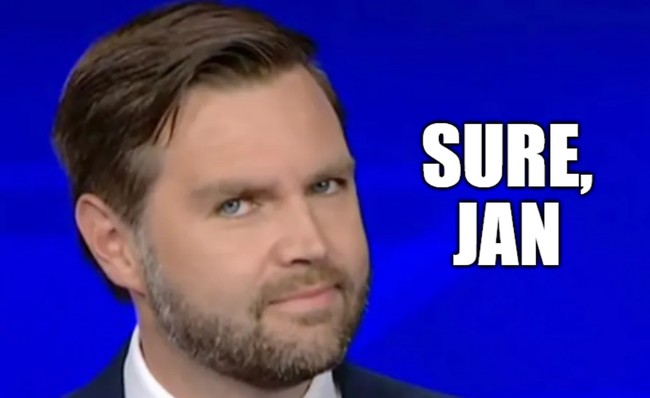ARTICLE AD BOX
Anchal Vohra is a Brussels-based international affairs commentator. She lived in Beirut until recently.
The war in Ukraine has exposed the fabled prowess of Russian weaponry as a myth and scared off its leading overseas client.
India — the world’s biggest arms importer — is drastically reducing dependence on Russian weapons, and is unlikely to make any new purchases from Russia. Earmarking $100 billion for future procurement, this now leaves a potential opening for Western arms manufacturers.
Over the last two decades, India spent $60 billion on weapons from Russia, but according to the latest report from the Stockholm International Peace Research Institute, the imports have been steadily declining, going from 76 percent in 2009–2013 to just 36 percent in the last five years — the first five-year period since the 1960s in which Russian defense exports “made up less than half of India’s arms imports.”
And according to Indian defense experts, the Ukraine war is set to accelerate the drop.
Leading Indian defense insiders POLITICO spoke to noted that while spares for in-service equipment will continue to be purchased from Moscow, Russia is no longer being considered for any large future buys. Nandan Unnikrishnan of the Observer Research Foundation think tank ruled out any “big ticket purchases’’ from Russia, while Amit Cowshish, a former adviser to India’s defense ministry, said Moscow was no longer “in a position’’ to meet India’s requirements.
This means Western countries and companies that show the willingness to agree to some technology transfers and to co-produce with Indian outfits stand to benefit.
Russia’s preoccupation with Ukraine, Western sanctions, India’s concern over the quality of Russia’s equipment, as well as wanting to develop an indigenous defense industry have all played a role in this shift. Another big motivation has been India’s desire to stay in America’s good books.
“India doesn’t wish to cross any redlines the West may have — particularly the U.S.,’’ Unnikrishnan remarked.
“Russia doesn’t have any illusions’’ regarding its capacity to export to India either, Cowshish said, since its domestic defense needs have now multiplied. For example, the Indo-Russian Rifles Private Limited — a factory established in 2019 to co-produce more than 600,000 assault rifles for the Indian armed forces — is reportedly still waiting for the delivery of tranches of Russian Kalashnikovs.
And according to Rahul Bedi, a senior defense journalist in New Delhi, this is just one of the many items Russia has failed to ship. “No one publicly speaks about this because it’s so sensitive,’’ he said.
“Russia was supposed to deliver five S-400 air defense systems — two are still remaining and no progress has been made. Then, we wanted to lease a Russian nuclear submarine and that was slated to be here by 2025. Now, I’m given to understand that the lease could have been scrapped. In addition, [there were] four frigates — two Russian and the other two were to be jointly produced in Goa — nothing has happened on that front either,’’ Bedi said. “It’s a huge mess.’’
Of course, some of that equipment hasn’t arrived because Russia’s busy manufacturing arms for its own troops and doesn’t have the bandwidth to export. Still, some other items are stuck because India doesn’t want to breach Western sanctions on Russia.
 India — the world’s biggest arms importer — is drastically reducing dependence on Russian weapons. | Natalia Kolesnikova/AFP via Getty Images
India — the world’s biggest arms importer — is drastically reducing dependence on Russian weapons. | Natalia Kolesnikova/AFP via Getty ImagesMoreover, even before the war, India had found the quality of some Russian imports — such as MiG-29K fighter jets — to be substandard, and the performance of Russian equipment on the Ukrainian battlefield has also come as a shock.
According to Swasti Rao of the Manohar Parrikar Institute for Defense Studies and Analyses, India has been looking on with surprise at the performance of some of the Russian kit.
“How come the Patriots took down the Kinzhal missiles that were touted as invincible? How come Russian ships are becoming such easy targets from a country that doesn’t have a navy? Its spy planes such as A-50s, and fighter jets such as Sukhois have been downed so effectively,” Rao told POLITICO.
India’s air force has been long dominated by Russian jets, but as the country now plans to revamp and procure over a 100 new multirole fighter aircraft, it isn’t even considering a Russian bid. Meanwhile, defense ties with the U.S. are strengthening — even if both sides are still grappling with deep-rooted mistrust.
For example, when Indian Prime Minister Narendra Modi visited the White House last year, U.S. President Joe Biden signed off on an agreement allowing General Electric to transfer engine technology to India to power its new stream of fighter jets.
And yet, given the long-standing mistrust between Washington and New Delhi, due to the U.S.’s defense sales in the past to Pakistan and its reluctance to share defense technology with India, France is emerging as India’s new favorite. New Delhi is still doubtful the U.S. will even share the engine technology it promised. Meanwhile, the U.S. still worries about the risk of critical technology ending up in Russia’s hands via India
 When Indian Prime Minister Narendra Modi visited the White House last year, U.S. President Joe Biden signed off on an agreement allowing General Electric to transfer engine technology to India. | Anna Moneymaker/Getty Images
When Indian Prime Minister Narendra Modi visited the White House last year, U.S. President Joe Biden signed off on an agreement allowing General Electric to transfer engine technology to India. | Anna Moneymaker/Getty ImagesFrance, on the other hand, is seen as keener to co-produce and easier to work with, and isn’t plagued by a cumbersome legislative process to sell weapons and transfer technology either. And with India’s recent purchase of 26 Rafale fighter jets, France has already become the second biggest exporter in the country.
“France is the new Russia, and much more than that,’’ Rao said. Additionally, according to defense experts, India also plans to grow defense trade with Israel and South Korea, and is considering German and Spanish companies for a new submarine.
Despite all this, India will still nurture its relations with Russia, even amid the decline in defense imports. China and Russia’s ever-warming relations worry India, and it will want to keep Moscow as a friend. And with nearly 65 percent of Indian hardware — helicopters, tanks and fighter jets included — originally sourced from Russia, the country can’t wean itself off all imports overnight.
Still, from nearly single-handedly arming India’s defense forces in the 1960s, Russia has now been demoted to being just one of many defense partners — an unexpected loss for Russia’s military-industrial complex, primarily due to President Vladimir Putin’s Ukraine invasion.
.png)
 9 months ago
4
9 months ago
4








 English (US)
English (US)